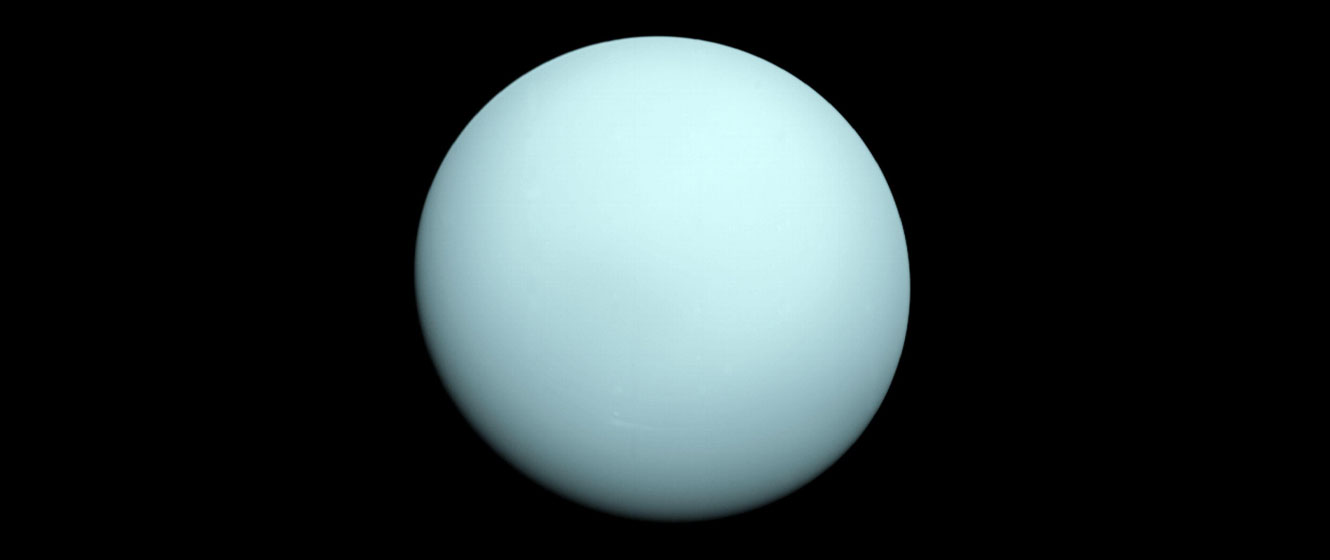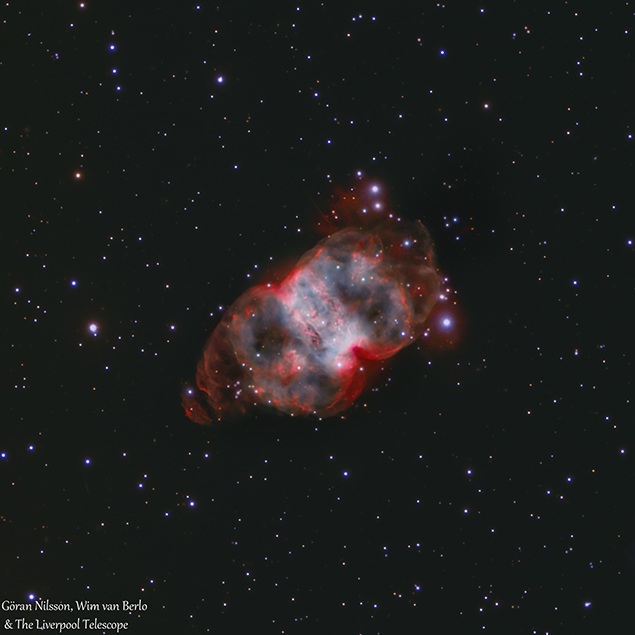
In this episode of What's in the Sky this Month, Teagan reviews some of the beautiful celestial objects you can see in the month of November!

Image credit: NASA/JPL-Caltech
Uranus at Opposition
Uranus, the seventh planet from the Sun, reaches opposition this month on the 16th. While it’s not a bright planet (it lies at the very edge of naked-eye visibility), it’s currently moving among the stars of Taurus and, therefore, appears high in the sky for northern hemisphere observers. As an added bonus, the planet is within the same binocular field of view as the Pleiades for the first half of the month - this is literally a once-in-a-lifetime opportunity to see the two together.
The planet stands out from the background stars by shining with a steady, aquamarine light, while a telescope at low power will show a tiny disc. If you have a scope of at least 200mm in aperture, you may also be able to spot Titania and Oberon, the planet’s two largest moons.
OUR NEAREST NEIGHBORS
Mercury can be seen low over the southwestern horizon from about 15 minutes after sunset throughout November. A thin crescent Moon appears eight degrees to its left on the 3rd, with the planet at greatest elongation from the Sun on the 16th. Similarly, Venus is an easy target, reasonably high over the southwest in the evening twilight, with the Moon appearing below it on the 4th. Saturn reached opposition in September but remains well-placed for observation throughout the evening in Aquarius. Look for a gibbous Moon very close by on the 10th. Neptune is also visible throughout the evening in neighboring Pisces. November, however, belongs to Uranus, which reaches opposition this month in Taurus with Jupiter rising mid-evening toward the east. You’ll find the waning gibbous Moon nearby on the 16th and 17th. That leaves Mars alone among the stars of Cancer in the predawn hours. You’ll find Castor and Pollux in Gemini pointing toward the planet at the start of the month with a waning gibbous Moon to its east on the morning of the 21st. The Moon itself is new on the 1st, with the Full Beaver Moon occurring on the 15th.

Image credit: Robert Gendler
Messier 31 - The Andromeda Galaxy
If you live under dark skies, you should be able to see the Andromeda Galaxy with the naked eye. Otherwise, binoculars will pick it up, and even small telescopes will show the dark dust band that cuts across it. Be on the lookout for M32 and M110, its satellite galaxies.

Image credit: Andrew Cooper
NGC 884 / 869 - The Double Cluster
As with M31, the Double Cluster is visible to the naked eye under dark skies, but the best views are through binoculars or a telescope with a wide-angle, low magnification eyepiece. Of the pair, NGC 884 has two bright stars near the center and is more compact and densely populated than its neighbor.

Image credit: Wikisky
Gamma Arietis - Mesarthim
A gem of a multiple star for any telescope, a magnification of around 50x will easily split Mesarthim into two brilliant white stars of equal brightness.

Image credit: Göran Nilsson, Wim van Berlo & The Liverpool Telescope
Messier 76 - The Little Dumbbell
One of the more challenging Messier objects, M76, can be found three degrees from the magnitude 3.6 star, Upsilon Persei. Small scopes can detect it, but larger scopes of 250mm or greater aperture are needed to better show the two lobes.
STELLAR CONCEPTS
Ice Giant: Our solar system includes two gas giants, Jupiter and Saturn, and two ice giants, Uranus and Neptune. The difference? Unlike gas giants, ice giants possess significant amounts of water, ammonia, and methane in their atmospheres and are characterized by icy cores enveloped in thick atmospheres, consisting of hydrogen and helium. Given their composition and distance from the Sun, studying these ice giants can provide valuable insights into planetary formation.










